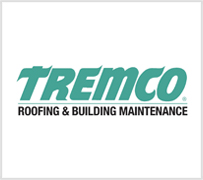
Home / News / Drain or Drown Your Roofing Materials

Just as a roof needs proper ventilation from inside, a roof also needs proper drainage outside. With climate change increasing the frequency and severity of storms, channeling water away from roofing materials is more important than ever. All over the country, we’ve had epic storms and 100-year rains that make it critical for home and business owners to take good care of their roofs.
The area of the country plays a part in the type of drainage you need. For example, the Olympic Peninsula receives 140 inches of rainfall yearly, and it is important for property owners to make sure drainage works all day every day. Gutters and drains channel water away from exterior walls and the foundation. In areas with heavy rain, proper gutter maintenance is critical. A blocked gutter or roof drain causes water to back up under the roof membrane, or to pool in places that could take days to dry out. Standing water is extremely hard on almost every type of roofing material, often working its way under the protective cover and eating away at the foundations of the roof.
Even in the Southwest, where an average of 7 – 14 inches of rain is the norm, drainage is still important. In our case, the duration and ferocity of our rain events, especially during the Monsoon season, means we need to channel a lot of water away in a hurry. With flat roofs being so popular in southwestern architecture, drainage is especially important when it does rain. Naturally, a steeply sloped roof will drain more quickly, but it has its own problems. In particular, where two roof angles meet, debris can collect and cause water to pool.
There are really three things to think about when making sure your roof drains properly — the slope, the size of the drains and the placement of drains.
Here are a few things to consider when building, replacing or updating your roof drainage:
Every municipality has building codes. Have your builder or roofer make sure any changes you want to make are in compliance with local ordinances. If you suspect your gutters are not functioning properly, the best idea is to call in a professional roofing company. They will know not only the drainage rate and building codes for your area, but will also be able to install and maintain your drainage system as well.











